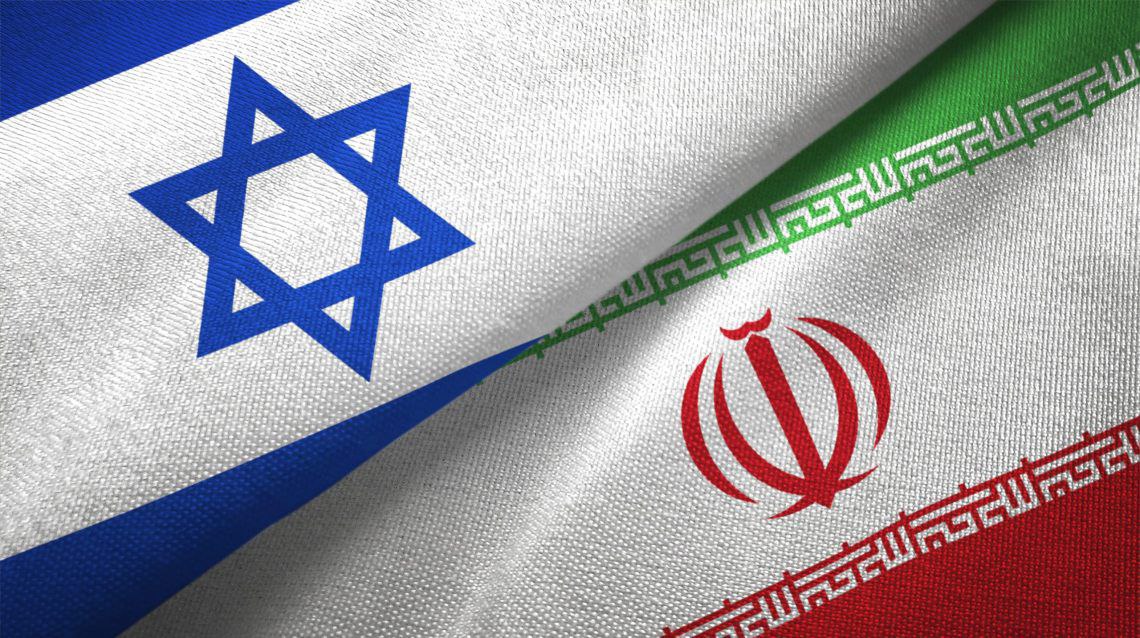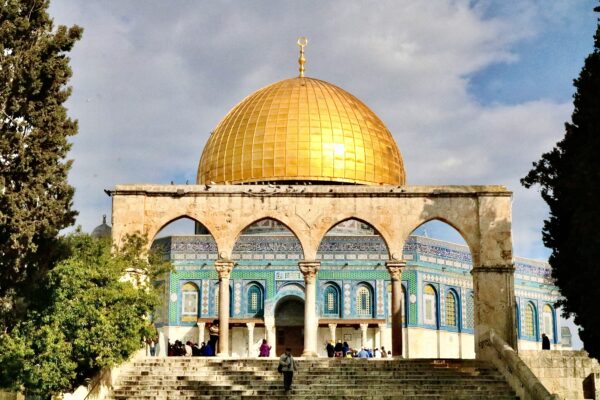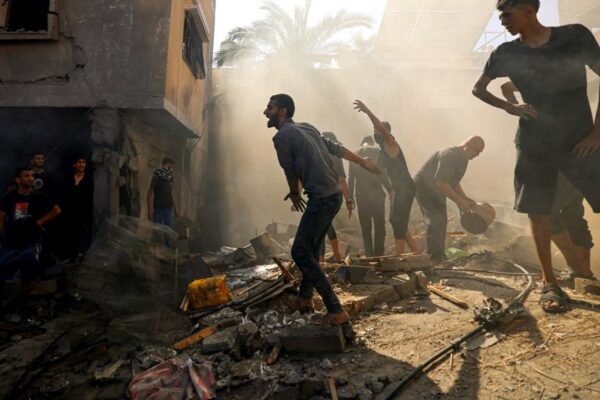So what happens next?
So what happens next?

The ongoing war that now engulfs Gaza has expanded further beyond the Palestinian-Israeli borders.
From the minute Operation Al-Aqsa flood was conducted, Iran, Lebanon’s and Yemen’s involvement was inevitable. When we cusp all this together it blends a picture to showcase a larger more regional conflict with Iran and Israel at the forefront.
The demise of several heads of non-state proxy groups under the strings of Iranian influence has left many in geopolitics unsure about what is yet to unfold. The most recent death being Yahya Sinwar, now have experts scratching their heads on whether the Middle East tips toward an all-out regional war or ushering ceasefire.
Iran, Israel, and the Axis of Resistance
Iranian-Israeli relations have been pretty much hostile since the establishment of the Islamic Republic in 1979, fostering support for anti-Israel groups in the 1980s and 1990s. This is much of a contrast to its former stance of accepting the Israeli state during the reign of the Shah before 1979. The Khomeinist approach came along, exporting a version of “pan Shia Islam” as one of the driving forces that culminated the axis, which later thus manifested into a string of militarized resistance amongst regions.
Hamas the most obvious, have received a blend of financial support, military aid, and intelligence sharing via the Islamic Revolutionary Guard Corps IRGC, with Israeli reports in 2019 allegedly stating a sum of $30 million was being provided to Hamas for the return of Israeli missile capabilities and militarized intelligence.
Yet several more proxies operate away from Iranian soil and also have the shared agenda of an anti-US, anti-Zionist and anti-imperialist stance. These have stretched from Pakistan to Iraq, with groups like the Popular Mobilization Forces (PMF) (Hashd al-Shaabi) who have been interwoven into Iraq’s security apparatus since 2016 to also closely co-operate with Tehran to peruse its wider geo-political objectives and obfuscating itself into Iraqi internal affairs.
The Iranian interstate nexus with its neighbours has made its soft power grow considerably under a Shia crescent, to weaken U.S. and Israeli influence in the Middle East – both via militarized and non-militarized strategy. The multi-faceted approach of manoeuvring alliances based on a “shared pan-Islamic unity” underpinning it with an “Us vs. Them” approach against imperial powers, has left it a sophisticated player in the conflict with Israel.
October 7th and Beyond
Yet as the war in Gaza continues, the resistance has procured significant losses with the heads of their proxies. Will this continue to aggravate Iranian Israeli aggression or will a ceasefire back to less invasive hostilities prevail?
On October 4th Supreme Leader Ayatollah Ali Khamenei led Friday prayers and a sermon in a rare appearance to commemorate the death of Hassan Nasrallah. His address focused on rallying a call to Muslims to stay united against Israel, giving the tone of not backing down from this war.
Al Jazeera’s Resul Serdar stated that the speech focused on unity, as the possibility for a regional war remains high, coming after Iran launched a retaliatory missile strike against Israel, firing approximately 200 missiles, marking a second direct attack on Israel within the year.
Israel on the other hand has showcased no signs of slowing down the war, vowing to hold its stance in Gaza for years to come, until the complete obliteration of Hamas is in order. A sentiment shared by Benjamin Netanyahu and his opposition within the Israeli political landscape.
Yet many experts have warned this may not be achievable. This political deadlock to continue came right after Yahya Sinwar’s death, leaving analysts to assume negotiations for a ceasefire would now be en route, yet Netanyahu’s uncompromising sentiments only polarize the situation even further.
What Happens Next?
The call for peace and stability in the region comes with facades of false promise. Whilst the international community has iterated for de-escalated tensions, it has been reported that US officials quietly backed Israel’s military push against Hezbollah.
What started as a war between Gaza and Israel has now boiled over into an alleged war that may very well soon engulf the region. With over 42,000 Palestinians dead and two million Gazans displaced, surely it begs the question for a ceasefire to be in the mix.
The political climate in Israel has also taken a sour turn, as Israelis also wish to see an end to this. Netanyahu’s reluctance to a hostage deal has left many fed-up with the Israeli government’s handling of the situation, as family members of those taken by Hamas wish for a deal to be closed sooner rather than later. Many Israelis have stated that the war is becoming merely pointless, with the prime minister’s poll ratings dropping to rock bottom for months after October 7.
When forecasting what experts have said the BBC recorded a numerous array of responses when their focus shifted toward Israeli presence in Lebanon. Many academics have stated that Israel wishes to neutralize the threats coming from the broader axis, despite the probability that complete neutralization is almost impossible.
Dahlia Scheindlin, author and fellow of Century International, notes that while Israel aims to protect its citizens, there may also be underlying ideological and expansionist ethos influenced by religious forces in the government.
Yezid Sayigh, a former Palestinian negotiator commented that Israel now evolving into a metamorphism of “forever wars”, by the longstanding political settlement underpinning the country will be all but gone since the October 7th attacks. The recent drone attempt on Netanyahu’s life has left officials stating that Iran will “pay a heavy price” in the days to come. This perhaps will feed into Sayighs inference of a “forever” war state, paving the way for more conflict to come.
References
-
Khamenei says Iran and its allies will not back down from Israeli attacks. Institute for Palestine Studies, October 4, 2024. https://www.palestine-studies.org/en/node/1654366 [1]
-
Iran increases Hamas funding to $30 million per month. BBC News, October 2024. https://www.bbc.co.uk/news/articles/czj9zzgvjrno [2]
-
State’s Ideology: Iran. The Washington Institute for Near East Policy, 2024. https://www.washingtoninstitute.org/policy-analysis/states-ideology-iran [3]
-
Iran agrees to increase Hamas funding to $30 million per month – report. Times of Israel, October 2024. https://www.timesofisrael.com/iran-agrees-to-increase-hamas-funding-to-30-million-per-month-report [4]
-
Leadership and Purpose: Iraq’s Popular Mobilization Forces. Institute for the Study of War, 2024. https://www.understandingwar.org/backgrounder/leadership-and-purpose-iraq%E2%80%99s-popular-mobilization-forces [5]
-
Strategies Underlying Iranian Soft Power. American Enterprise Institute, 2024. https://www.aei.org/research-products/journal-publication/strategies-underlying-iranian-soft-power [6]
-
Khamenei says Iran and its allies will not back down from Israeli attacks. Al Jazeera, October 4, 2024. https://www.aljazeera.com/news/2024/10/4/khamenei-says-iran-and-its-allies-will-not-back-down-from-israeli-attacks [7]
-
Biden: There’s Opportunity to End Attacks between Iran and Israel. Al Jazeera, October 18, 2024. https://www.aljazeera.com/news/2024/10/18/biden-says-theres-opportunity-to-end-attacks-between-iran-and-israel [8]
-
Sinwar’s Death and the Escalation in the Israel-Gaza War. CNN, October 18, 2024. https://edition.cnn.com/2024/10/18/middleeast/sinwar-death-war-analysis-intl-hnk/index.html [9]
-
Iran-Israel Conflict: An Analysis. BBC News, 2024. https://www.bbc.co.uk/news/articles/c2ek1ejj11ko [10]
-
The Day After for Israel: Strategic Considerations. Carnegie Endowment for International Peace, October 2024. https://carnegieendowment.org/middle-east/diwan/2024/10/what-day-after-for-israel?lang=en [11]





